It’s that time of year again, when the cold starts to break and warmer weather gradually begins to grace us with its presence.As the seasons change, we often seek out and welcome food and drink that reflects our surroundings.When things start to heat up, our desire for beverages that quench our thirst and cool us off grows exponentially with the increase in temperature.In a world filled with slushies and punches, there is one classic cocktail that has been helping us usher in Spring and Summer for centuries: Sangria
It is true that when most people think about sherry and champagne, two very different images come to mind. Arguably, sherries and champagnes are two very distinct types of products, one being a fortified wine and the other a sparkling wine. While surely they differ in many ways, they do share some similarities, including:
First off, both wines have specific regions where they can be produced, regions that are among the most incredible places to visit on Earth, with long ancient traditions, endless charm, and great culinary offerings. Sherry comes from Jerez in Spain, while champagne is produced in the Champagne region of France. Both are protected by a set of regulations that dictate how they can be produced and marketed. Champagne is protected by the Champagne AOC (Appellation d’Origine Contrôlée) system, while Sherry is protected by the Denominación de Origen (DO) system in Spain. That protection does not come by accident, because both regions share ample experiences where their names have been historically stolen by countless other winegrowing appellations worldwide, with innumerable lookalike [fake] reproductions flooding the international markets for ages. An issue that has been mostly addressed in recent decades, fortunately.
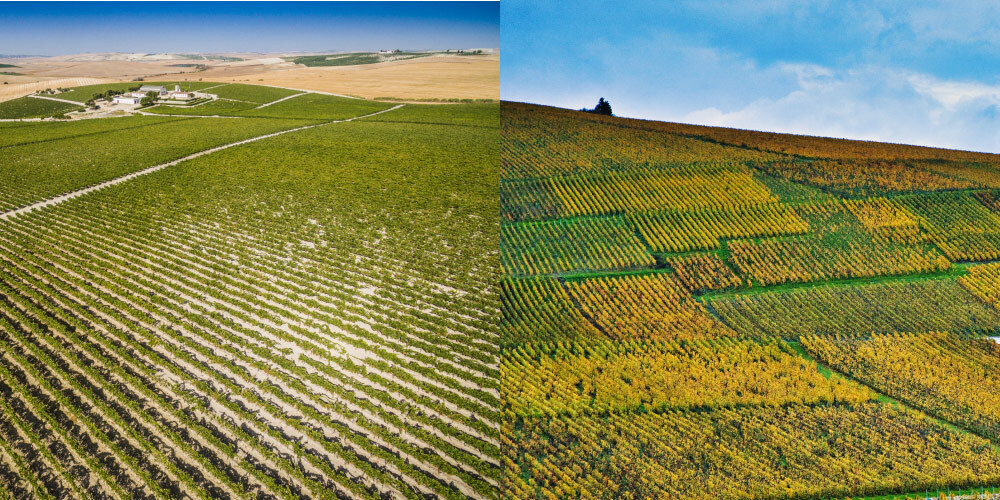
The two regions are located in what are considered [opposite] marginal climates (perhaps Jerez becoming more so over time…), one on the northern border of the European vine-growing areas (Champagne) and the other on the southernmost tip of the continent (Jerez). Conversely, their soil compositions are greatly homogeneous, with rather infertile slopes containing high levels of chalk and limestone, which encourage the roots to burrow down to a regular, but by no means generous, supply of water, as well as contributing to the final personality of the wines. For this reason, the proper selection of rootstock is key in both areas (chlorosis is a symptom of iron deficiency in vines that tends to be common on soils rich in limestone). While the grapes used in Jerez and Champagne are different, both wines are made from three specific varieties that are well-suited to their respective terroirs. Champagne is primarily made from Chardonnay, Pinot Noir, and Pinot Meunier, whereas sherry is made from Palomino, Pedro Ximénez, and Moscatel.
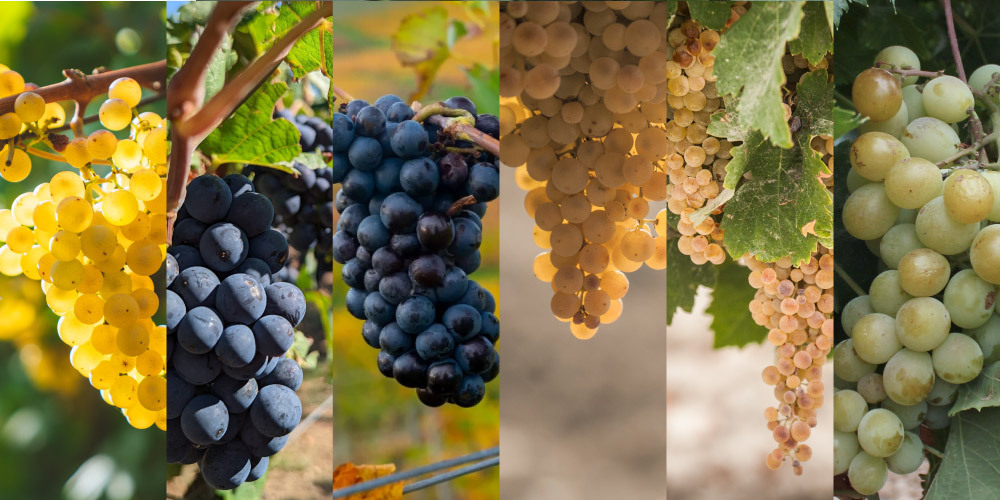
Vineyard ownership and trade structure are also pretty similar with thousands of independent growers and a production dominated by a small group of a few brand names and wineries that produce in great quantities. The comparison between the coexistence of growers, smaller (family-owned) winemakers, and the big ‘Houses’ is similarly engaging in the two regions. These large producers will typically buy substantial amounts of grape/base wines from the other players to sustain their stocks each year, plus to be able to maintain a house style whatever the individual year’s conditions. Both regions boast an impressive collection of qualified sites (Pagos and Crus) from which to source perfectly-matured grapes, and the overall interest in the singularities of the vineyard and the quality of the base wines are greater than ever.
Both regions require meticulous production methods to achieve and maintain their unique flavors and characteristics year after year. They are often referred to as “wines of process” but, again, the importance of the origin of the grapes is as healthy as ever. For example, the different pressing levels applied to the grapes when crushed are equally crucial in order to set the grade and profile standards of the future wines. Champagne is made by adding a mixture of yeast and sugar to a still wine, causing a second fermentation that generates carbon dioxide and creates bubbles, while sherry is fortified with brandy and aged in a solera system.
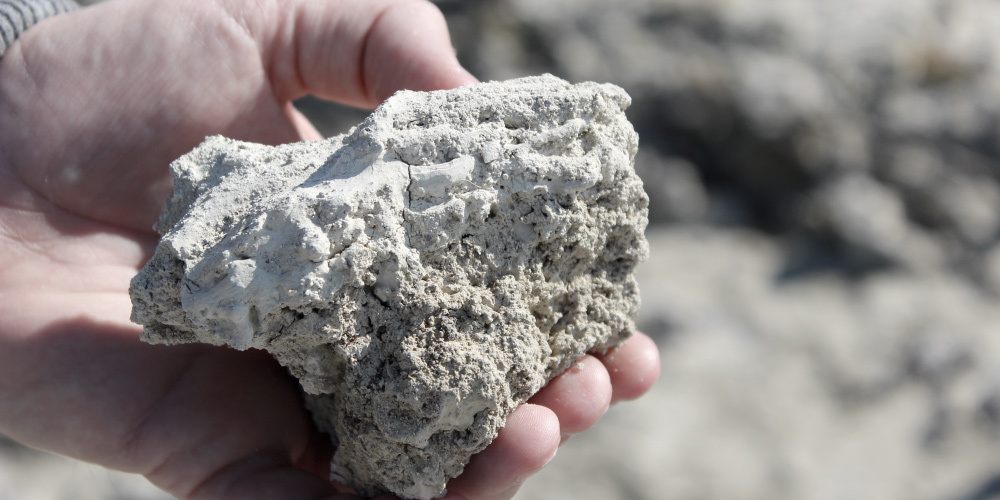
Champagne is typically aged in the bottle for a significant period, which contributes to its complexity. Similarly, sherry undergoes a unique aging process that involves a fractional blending of different vintages to also create a consistent style. Champagne is aged on lees (the dead yeast cells), which gives it a unique flavor and texture. One particular and popular style of Jerez wines (finos) are aged for prolonged periods of time under a veil of local yeast known as Flor. They both heavily rely on the use of yeast. In both cases, the extent to which the winemaking process can transform the thin, (somewhat neutral) lightweight base wines that the regions’ vineyards produce into noble, creamy, deep-flavored essences of sophistication (Champagne), or uniquely complex, savory, nutty concentrated flavors (Sherry) is captivating.
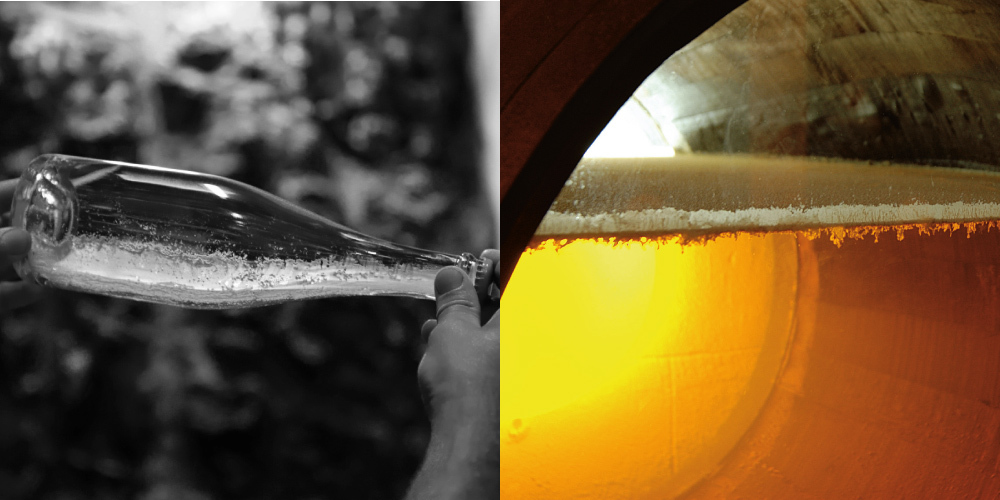
Although we must admit that impressive short-lived wines are becoming more common in Jerez lately, and the same may be true for the wines of the Coteaux Champenois appellation in Champagne. Then, blending is a huge part of the winemaking process of both regions, so much so, that we could say that their existence is predicated on the need to blend. In the case of Champagne, due to their extreme northern conditions far from the equator, the character of each vintage can vary so much that they need to blend multiple wines to achieve consistency. In Jerez, ‘refreshing’ the solera systems with younger wines over long periods of aging is necessary to maintain the character of the classic styles. Both produce most of their wines assembled from several vintages and from multiple vineyards too! Additionally, ongoing discussions over stating extra information on back labels like “disgorgement date” and “bottled on” are ordinary here. Contrarily, the relation between “quantity and quality” isn’t necessarily a debate in either of them. It’s been long proven that they both can literally make millions of outstanding bottles of wine!
Both sherry and champagne are versatile wines that pair well with a broad variety of ingredients and preparations. Their food affinity capabilities are just glorious. Considering champagne a mere aperitif, or that there is only one basic type of sherry is foolish, and far from the truth. They are though commonly served as a pre-dinner drink (or at the end of the meal). Sherry is often served to accompany savory snacks, while champagne is typically paired with hors d’oeuvres or caviar. Sweet styles of sherry may be poured with desserts, and champagnes may be kept for last as well, to celebrate New Year’s Eve for instance! But sadly, this is it, and it isn’t nearly close to what you can do with these two regions as far as food and wine pairing possibilities. It is no secret that both sherry and champagne come in a variety of styles, vastly ranging from dry to sweet. In the case of sherry, the different styles are determined by the length of aging and the blending process, sometimes using sweet wines, but also by the amount of exposure to either yeast or oxygen. In Champagne, the different styles are typically determined also by the length of aging and by the amount of sugar added during the dosage process, among others. This gives both regions an unparalleled range of profiles that can be paired with a virtually unlimited assortment of foods.
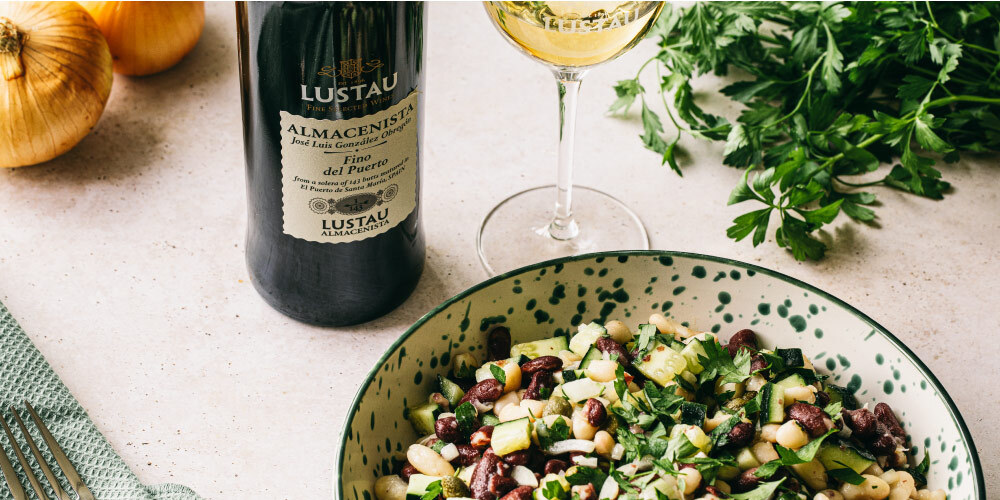
Sherry wines and champagnes show complex flavor profiles that develop over time. Sherry is known for its nutty, salty, and slightly sweet flavors (based on the style in particular), while champagne is known for its crisp acidity, subtle fruitiness, and toastiness. They are typically served at a specific temperature. Sherry is best served slightly chilled (again, depending on the style), while champagne is usually served chilled (hopefully not too cold) to enhance its creamy texture and flavor.
Despite this, both regions bring out very special wines that are largely misunderstood. This statement is indisputable with the Spanish wines since most people still believe that ‘sherry’ is just about that dark and sweet wine they may occasionally enjoy around holidays when the reality is quite different. On the other hand, true grand champagnes are downright missed or just poorly handled on many occasions. They are the heroes of the wine world! Another thing related to this is the fact that there is a popular conception that these two types of wines must be promptly consumed upon release. They are certainly delicious at that stage in most instances, but the beauty, precision, and balance found in old, properly-cellared bottles of champagne and sherry are potentially breathtaking. Next, the issue with glassware usage is another disgraceful point of connection, with both wines suffering from glasses that are too frequently too small and incapable.
Now, although both wines seem to have evoked prestige and status for centuries, today, they continue to do it in a radically different way; they no longer are enjoyed by only a select elite group, these are widely available to delight all that appreciate fine wines. Once considered the finest wines in the world, will sherries be able to catch up with the current volume and value of sales of champagne ever again? Only time will tell…







